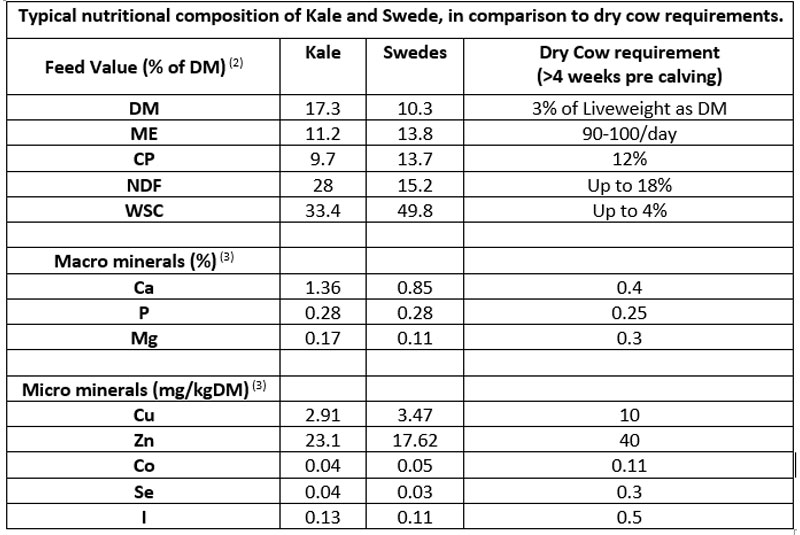Feeding Winter Brassicas 101
Brassica crops such as kale and swedes are a great winter feed. They are suitable for those who want to avoid feeding fodder beet but still need to get their animals off the pasture. However, as with every feed type, there are nutritional pros and cons, and management tactics to keep in mind to ensure stock continue to thrive throughout the winter.
The first aspect to consider is the feed profile of the crops, this includes: dry matter (DM), crude protein (CP), metabolisable energy (ME), NDF (fibre) and the water-soluble carbohydrate (WSC)/sugar content of the crops. Industry averages are available, however there are many variables that impact crop composition; therefore, it is best not to guess- getting it tested is best practise. And don’t forget to split the bulb and leaf when it comes to Swedes. This is especially true for getting a DM%, to ensure feed allocation is accurate, and CP as the leaf-to-bulb ratio can change over time.
Brassica crops are typically low in fibre and high in soluble sugars, while protein content can vary depending on the portion and quality of leaf in the crop. This combination can mean there are risks around poor rumen function, acidosis, and if the protein is low, poor growth rates and/or foetal development. To manage these factors, ensure animals are transitioned onto the crop carefully and completely, over a two-week period, minimum. Additionally, never move hungry stock onto the crop, and provide free access to a fibre supplement with a decent NDF and protein content, such as pasture silage. This will achieve several things:
– Increased rumination, subsequently increasing the production of saliva, a natural rumen pH buffer
– Slows rumen flow, improving feed conversion efficiency
– Provides protein to meet liveweight and/or foetal growth requirements
– Keep animals feeling physically full, preventing extra walking and mess
– Promotes internal heat production to keep them warm
The next aspect that requires consideration is the macro and micro mineral make-up of the brassica crops. When it comes to macro’s, brassicas are typically high in calcium and potassium, and low in phosphorus and magnesium. This imbalance of macro minerals is the perfect storm for milk fever come calving time (1). Therefore, it is best practise to remove springing cows from the crop 4 weeks pre calving.
In terms of micro minerals brassicas are notoriously low in copper, cobalt, selenium, and iodine. To make matters worse, the absorption of these minerals can be further impacted when soil is ingested during grazing, due to the high iron content in soil. Iron is an antagonist which binds up many trace elements and makes them unavailable to the animal, causing the animal to use their bodily reserves for supply instead, forcing deficiencies. To combat the low trace element profile of brassica crops it is a good idea that blood/liver tests are carried out pre-winter to assess mineral status and rectify any deficiencies ahead of time. Following this, supplementing the diet with a winter-crop specific mineral molasses block, such as the SealesWinslow Winter Crop Block is one solution. By providing this block in 25kg tubs, or as 500kg blocks to cattle 24/7 while they are grazing winter crops, there can be confidence they are receiving the maintenance trace element levels they require.

For more information regarding the Winter Crop Block, or advice around winter crop management, contact your local TSR, or call 0800 287 325.
1. Dairy NZ. Animal health problems on feeding brassicas. Dairy NZ. [Online] 2022. https://www.dairynz.co.nz/feed/crops/animal-health-problems-on-feeding-brassicas/.
2. Nutritional evalutaion of five specis of forgae brassica . Westwood, C.T., Mulock, H. Christchuch : Proceedings of New Zealand Grasslands Association, 2012, Vol. 74.
3. The macro- and micro-element contents of swedes and kale in Southland, New Zealand, and the effect of trace elemnt-amended fertiliers on the their Co, Se and Cu concentrations. Grace, D.N., Craighead. M., and Watt, B. Chistchurch : New Zealand Journal of Agricultural Research, 2000, Vol. 43.

